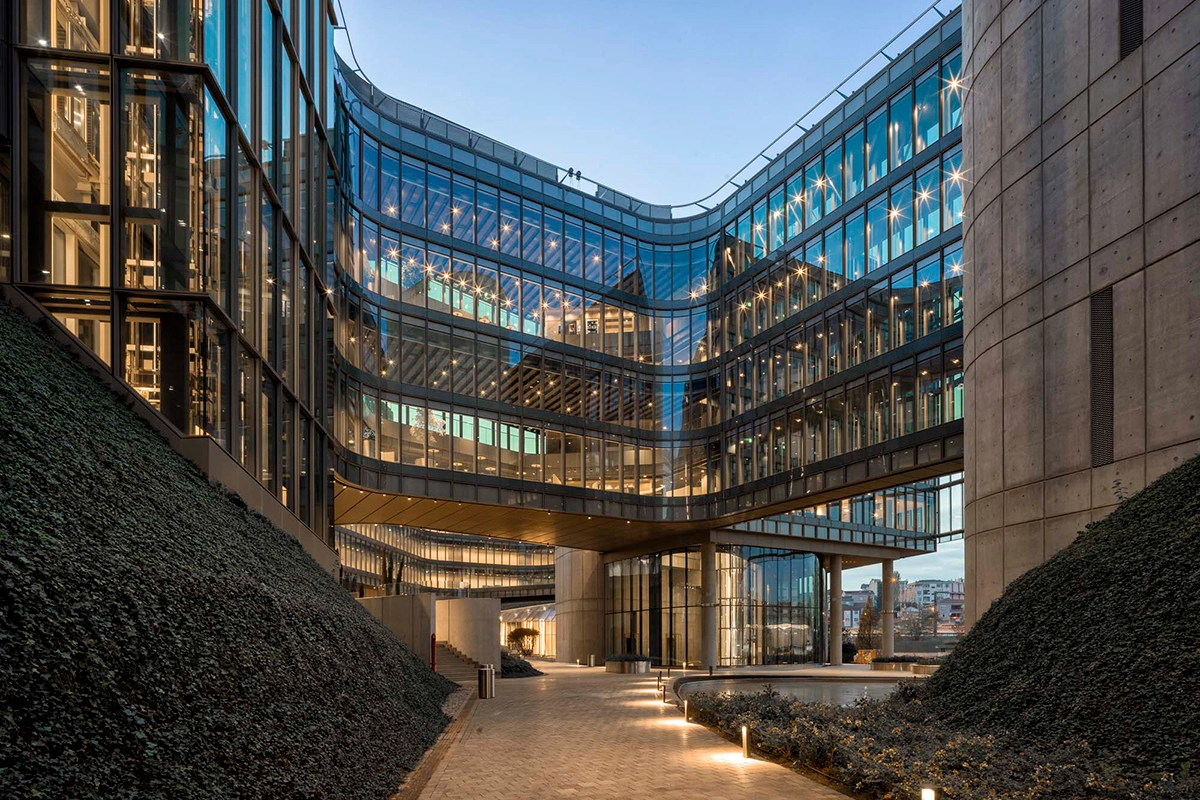Glass Walls, Open Spaces: How Contemporary Bank Architecture Builds Trust
Introduction
At the heart of cities, on bustling corners or tucked quietly into business districts—bank buildings have long represented more than just financial hubs. They've stood as architectural expressions of trust, permanence, and institutional power. In this blog, we explore how banks are reshaping their image through architecture: from marble columns to glass façades, from vault-like structures to open lounges. A bank doesn't just store money; it reflects an era’s ideals and design philosophy.
From Fortress to Transparency: A Shift in Trust
For decades, bank architecture was built on the idea of inaccessibility—thick walls, small windows, iron vaults. Trust was measured by how impenetrable a building looked.
Today, that logic has reversed.
Now, transparency equals trust.
Glass façades invite people in. Open plans and sunlit interiors replace stone exteriors and security-heavy halls. Security is no longer about walls—it's about approachability, user experience, and spatial clarity. Architecture has become the silent narrator of this new banking philosophy.
Case Studies: Three Examples of Modern Bank Architecture
1. ING House – Amsterdam
- Designed by Meyer & Van Schooten; appears to "hover" on 16 steel legs.
- Emphasizes transparency, energy-efficiency, and natural light.
- A sustainable design that reflects openness and innovation.
2. BBVA Headquarters – Madrid
- Designed by Herzog & de Meuron; includes the iconic "La Vela" tower.
- A horizontal campus design encourages interaction and accessibility.
- LEED-certified with a focus on greenery, daylight, and flexible spaces.
3. HSBC – Hong Kong
- A Norman Foster design; a hallmark of high-tech architecture.
- Built without interior support columns, allowing flexible space use.
- Features include daylight-mirror systems and a public ground-floor plaza.
The Transformation of Bank Branches
Then: Teller windows, transactional spaces, isolated offices.
Now: Open layouts, digital kiosks, consultation lounges, even café corners.
Modern branches are no longer just places to “do banking.” They’re experience centers, where clients interact with tech, advisors, and even community events. Human-centered design has taken priority over traditional service desks.
Sustainability & Digitalization: The New Standards
- Green Buildings: Banks now strive for LEED or BREEAM certification with solar panels, green roofs, and passive lighting systems.
- Digital Impact: As mobile banking grows, physical spaces adapt—less counter space, more self-service and personalized advice areas.
- Modular Design: Branches are now flexible, adjustable, and multi-purpose to evolve with client needs.
What Will Bank Buildings Be in the Future?
- Virtual Branches & Metaverse: Some banks have already set up digital branches in virtual worlds, offering real-time advisory with avatars.
- Multisensory Design: The future is not just visual—expect sound, light, scent, and interactivity to shape customer trust.
- Community Integration: Branches may act more like local hubs—hosting talks, events, or coworking spaces.
Closing Note
Bank buildings are evolving—no longer intimidating vaults but open, meaningful spaces. Glass walls aren’t just beautiful; they speak a new language of transparency, access, and trust. Here on the blog, we’ll keep exploring this exciting intersection of architecture and finance.

